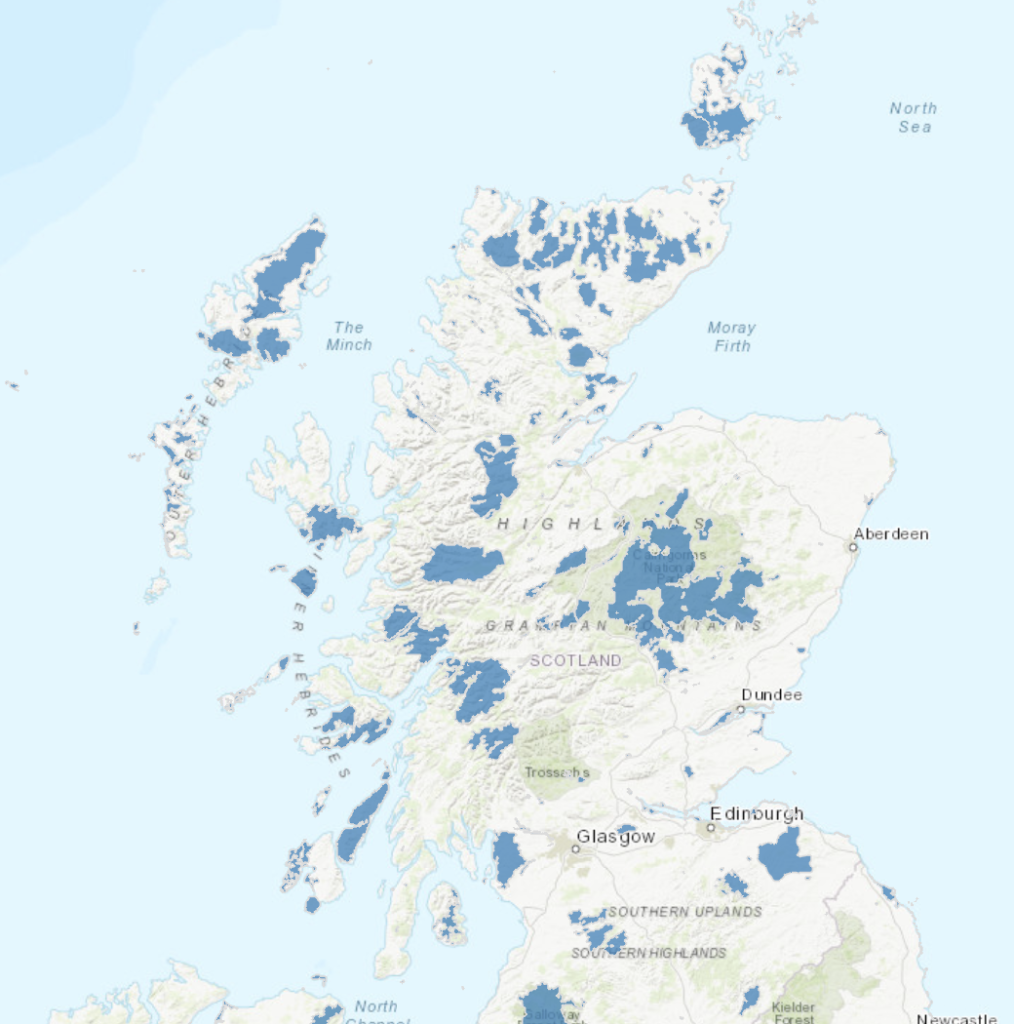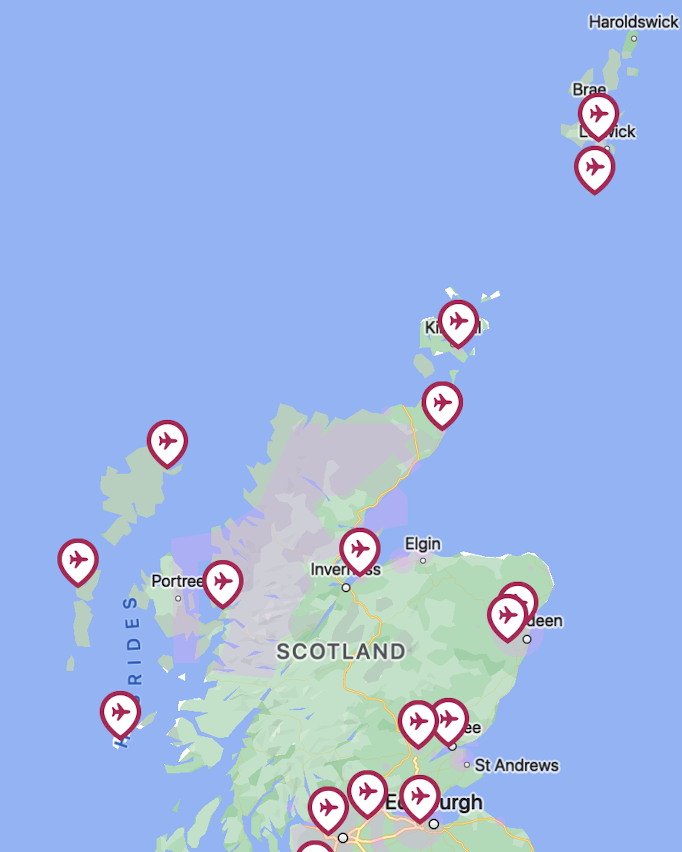Scotland: Flying in the Highlands and Islands
Avoid the birds and find the fuel

The Highlands and Islands of Scotland provide some of the best GA flying opportunities in the world, with glorious scenery and unrestricted lower level airspace. Helipaddy have some epic sites to land at, especially in the Hebrides.
Bird areas

Before flying low, please review the NOTAM’s reserve areas but also the RSPB maps at
https://opendata-rspb.opendata.arcgis.com/datasets/RSPB::ibas-uk/about
and
https://opendata-rspb.opendata.arcgis.com/datasets/RSPB::rspb-reserves/about
Always check for nesting areas in your planned route. DO NOT FLY NEAR these bird areas. It gives helicopters a bad name. In any case, birders have powerful cameras and your tail number will soon be reported. For more on avoiding nesting birds, please see Scotland : helicopters and birds.
Fuelling
Forward planning is needed to avoid problems with the somewhat patchy provision of Avgas (and now JetA1) and the cost and weather risks of repositioning. The natural gateway to the Western Isles is Oban. In fact, this is the last place that it’s possible to get Avgas before Stornoway all the way up north in Lewis which makes for a long sea crossing. So R44 trips around the isles to visit Skye, Barra or North and South Uist are usually going to have to tend back to Oban.
Since around 2020, Oban does not supply JetA1. AVGAS is available during operational hours (last uplift 15 minutes prior to closing) at their self-service fuel station on the southern end of the main apron.
JetA1
Oban no longer provides JetA1

Avgas

Sadly, despite a government report in 2009 that recommended improving aviation facilities on the islands there has been no change in this area. The outer islands did not experience much demand for Avgas and thus it is only available in very few places. If you are flying up the East coast then you could consider landing at Longside, a small airfield operated by the Buchan Aeroclub. If you give one day’s notice, Mr Millbank will bring in a bowser of 100LL. Helipaddy’s recent experience here was very good. A refuel here would give you sufficient range to reach the Orkneys for lunch at the Foveran.

If you fly a turbine, you can get Jet A1 at Plockton by calling PDG Helicopters to get the access codes. Avgas is not generally available, but in the past Helipaddy has arranged for barrels of Avgas to be left on the airfield. This has then served as a refuelling stop when organising a Scottish Rally. Obviously a quorum of participating aircraft is needed to make this worthwhile. If you think you would like the option of refuelling here contact Helipaddy to see if they have any spare barrels. Helipaddy rates Plockton as one of the most picturesque airfields in the whole of the UK. So even if you’re not stopping to refuel it’s worth landing just to experience the view.
If you have based yourself in the Western Isles, possibly in one of the heli-friendly hotels such as the Eriska or the Clachaig Inn, you might be tempted to fly further North to the Orkneys and the Shetlands. This will require a refuel in Stornoway and then east to Wick or back to Oban and then up the Caledonian Canal taking the more overland route to Wick. Once here it’s not too much of a stretch to refuel at Kirkwall or Sumburgh. Flying around these islands — in the right weather conditions — should be on your bucket list!
Out of hours (eg weekends)
When flying a helicopter in Scotland, many of the airfields offer an out-of-hours landing indemnity. HIAL (Highlands and Islands Airports Ltd) operates an out-of-hours permit scheme enabling landings to take place at Benbecula, Campbeltown, Dundee, Inverness, Islay, Kirkwall, Stornoway, Tiree and Wick. View Helipaddy’s “Landing Off-Airfield by Helicopter in Scotland” guide for how to apply.
Argyll and Bute Council also operate an out of hours permit for around £10 and the application procedure is all in the guide and covers landings at Oban, Coll and Colonsay. However, you won’t be able to refuel out of hours at most of these sites so a landing might not be that useful unless you are intending to leave the heli overnight.
Landing sites
There are some wonderfully remote and unique landing sites. The Crask Inn considers itself the most remote pub in the UK. Note the helicopter hidden in this picture taken in September 2016!

Don’t forget your hiking kit as the possibility of the weather moving against you is very real and any overnight landing above 500 feet is always more risky. A day walking in the hills will always be preferable to scraping along under low cloud.
When the weather is good the adventure will be spectacular. See also our United Kingdom and Great Britain Helicopter Guide.



One thought on “Scotland: Flying in the Highlands and Islands”